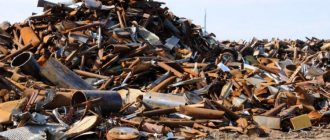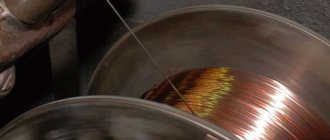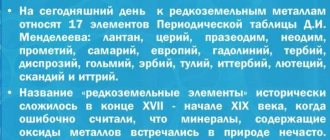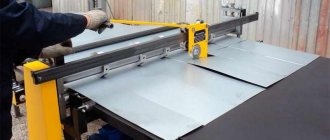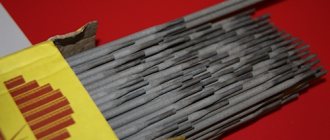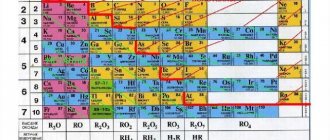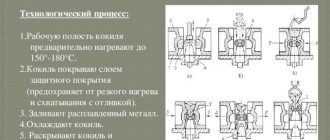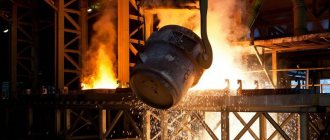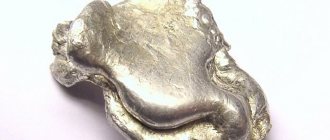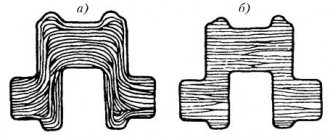Groups of non-ferrous metals
All types of non-ferrous metals should be divided into two groups: basic and rare. The group of rare non-ferrous metals includes scrap of tungsten, magnesium, antimony, molybdenum and its ferroalloy.
There are also groups of heavy and light non-ferrous metals. These include:
- Copper is a non-ferrous metal that has a golden-pink hue, and also has good ductility, and the main characteristic is electrical conductivity. When combined with other elements it can form bronze. Scrap copper can be found in power cables; water pipes; household products.
- Brass, a widely used non-ferrous metal, is a copper-based alloy with zinc as the main component. Scrap brass is found in jewelry, nuts, bolts.
- Lead is a toxic gray metal. The main sources of scrap lead are batteries, stationary and automobile, power and telephone cables, and balancing weights.
- Zinc is a metal that in its pure form has a blue-white tint. An oxide film may form upon contact with air. Zinc scrap consists of: automobile parts; furniture fittings; sockets for light bulbs; carburetors; reagents for electrical engineering, etc.
- Nickel - has a silver-white color, ductile, used in the production of pipes, spirals, it is also ferromagnetic. The source of this metal scrap is electrodes: anodes, cathodes; as well as nickel alloys: cupronickel - tableware, nichrome - can be found in heating elements of equipment operating at high temperatures.
- Tin is a white or gray metal that tends to darken and can turn into a powder-like state. It has a high melting point - 232°C, and, despite the cold state, retains plasticity. Recycled tin material is found in bearings; white tin food containers; household pipelines.
The group of light non-ferrous metals includes:
- Aluminum is one of the most popular metals in terms of mining and production volumes on the world market. It has high electrical conductivity and is difficult to work with in welding, but can be processed well using other methods. The most expensive aluminum scrap is food, electrical and profile aluminum waste, as well as aluminum cable scrap.
- Titanium – this material is a fairly refractory metal that has increased strength and resistance to deformation. Secondary titanium can be found in worn elements of shut-off valves, wheel rims and pipelines.
Determination of the chemical composition of scrap
The chemical composition of scrap metal is determined in the laboratory using special equipment to examine samples taken from a batch of scrap. The most valuable secondary raw materials are unalloyed metals with a small amount of impurities, although quantitatively pure metal concentrates are not often found in scrap.
The main part of non-ferrous scrap metal is usually alloys. The compliance of a batch of scrap with a certain type is determined during acceptance by the element whose specific gravity predominates in the alloy.
The study of the chemical composition allows you to accurately determine the grade of metal (alloy) to classify as a specific type of scrap metal and carry out marking in accordance with GOST 1639.
Scrap recycling
It is worth adding that scrap recycling is a highly effective procedure that can make it possible to use metal several more times to meet human needs. The entire process of recycling metal waste is carried out in special premises, plus special documents are required for this activity.
In certain cases, waste disposal by landfill may be used. This method is used in the case when, after passing all the necessary laboratory tests, it is determined that the metal does not meet the stated norms and standards. Bulldozing is the most famous and widely used method for this method. In addition to the bulldozer, waste compaction with an industrial press can also be used; after the briquettes are formed, they are buried in the ground.
The first thing that happens to the scrap after it is delivered to the collection point is radiation control. It is strictly prohibited to recycle parts of equipment from nuclear power plants, parts of ships that are capable of operating from nuclear power plants, and material that has been in an environment with increased background radiation. It is also prohibited to recycle equipment that was used in departments of clinics for people with cancer.
Physical parameters of scrap
Non-ferrous scrap intended for subsequent processing and production of usable metal is accepted in the following physical states:
- scrap;
- lump waste;
- shavings;
- tangled wire;
- powder (mainly rare metals - cobalt, titanium, tungsten, molybdenum);
- paste;
- other physical conditions.
GOST defines strictly defined physical conditions for each type of scrap.
In addition, you can hand over TsAM (zinc, aluminum, magnesium) for scrap; such alloys are handed over to the LOMTSVETMET point.
Subtleties of working with non-ferrous metal
Do not forget about safety precautions when working with non-ferrous metal!
Every time when conducting research on any batch of scrap, the percentage of harmful and toxic substances is checked. It is for this reason that studies are carried out to determine the presence of radiation, explosiveness, and the presence of harmful chemicals. Absolutely all batches of scrap must have a certificate of conformity in accordance with GOST.
According to the regulations and standards, an inspection is carried out and the class, type of substance, fire hazard and a number of other indicators are established.
Basic acceptance rules for non-ferrous scrap metal
Features of delivering scrap to the point
Buying scrap non-ferrous metals to a collection point has its own characteristics. Everyone who carries out activities related to the purchase and resale of secondary metal raw materials is required to comply with the established rules.
First, the person handing over the non-ferrous scrap brings it to the collection point. He writes a corresponding application for delivery, and employees draw up an acceptance certificate and an act on the receipt of scrap metal, confirming the implementation of recycling. After the batch is handed over to the receiver, the scrap is checked for explosion safety and the absence of harmful radiation. If the scrap is safe, the workers at the point issue permission to hand it over. Based on the type of metal, volume, as well as a number of other factors, the depositor is paid a certain amount with the obligatory issuance of a receipt. Thus, the scrap shipment becomes the property of the collection point.
Rules for admission to individuals and legal entities
Points have the right to accept scrap non-ferrous metals from the following categories of the population:
• individual entrepreneurs;
• legal entities;
• individuals.
Acceptance of non-ferrous metal from an individual is carried out only after submitting a written application, which must indicate:
• passport details;
• information about the lot being delivered (description, type of scrap);
• ownership of non-ferrous scrap (disassembly of personal old equipment, etc.);
• date and signature.
When accepting metal, you must have your passport with you, as well as property documents if you are handing over large-sized scrap, such as a car.
Special equipment is used to transport large non-ferrous scrap
If the consignment is handed over by an individual entrepreneur or organization, the list of documents presented expands, representing:
• accompanying documentation (invoices, checks, receipts);
• power of attorney giving the right to receive funds from the sale;
• power of attorney for non-ferrous scrap - if it is not the personal property of the deliverer;
• acts on the write-off of failed equipment that is handed over for acceptance.
Non-ferrous scrap metal and its cost at collection points
Factors influencing the price of non-ferrous scrap
Any enterprise specializing in the reception of scrap metal has general criteria that affect the cost of non-ferrous metal. Prices for non-ferrous scrap are determined based on:
• metal type;
• quality and purity;
• composition;
• size;
• batch volume.
Quality and purity of non-ferrous scrap
The cost of non-ferrous metals and alloys can go down or up depending on quality and purity. The presence of impurities in high concentrations leads to a drop in cost.
The purity of non-ferrous scrap should be above 90%, in alloys - 40-50%.
The quality of the received batch is reduced by the presence of:
• household and construction waste;
• winding parts;
• soldering;
• plastic;
• paints.
Composition and dimensions of non-ferrous metal scrap
From the point of view of price dependence on composition, scrap metal is divided into the following groups:
• Copper-brass group. Considered the most expensive;
• Lead-tin group. Located in the middle price category;
• Aluminum group is cheaper, especially TsAM.
There is a relationship between the dimensions of recyclable materials and the price. Most recycling companies accept non-ferrous scrap metal in the form of:
• pieces;
• shavings;
• powder.
Lumpy scrap requires a large storage area, as well as more energy, time and finances during processing, so its cost is lower. Chips or powder are easier to store and transport, processing takes less effort, and accordingly, the price for such recyclables is higher.
Volume of delivery lot
It is more profitable to sell scrap metal in bulk. Most reputable collection points and processing enterprises agree to accept only large quantities - over 100 kg or more than a ton. It is profitable to hand over small lots to resellers or individuals; they agree to give a good reward for a small amount of scrap.
Dependence of prices on the place of sale
Resellers and small acceptance sites for non-ferrous metals may offer better prices for metal recyclables. However, when handing over, you should make sure that the receiver has a license and the necessary documents.
Large organizations in the form of metal depots and processing plants always offer objective prices. The advantage of delivering metal to such enterprises is that they have highly qualified workers and equipment and can help with scrap metal removal and dismantling.
The staff of the point will carry out the dismantling efficiently and professionally
Ways to profitably sell scrap
There are ways to help sell metal so that the price is higher. These include:
1. Reduced clogging. If, before selling, non-ferrous metal scrap is cleaned of impurities in the form of an oil film, soot and soot, plastic parts, and household waste, the price can be raised. If non-ferrous scrap contains elements of ferrous metals, it is better to separate them and deliver them separately.
2. Sorting. Before handing over, it is optimal to distribute non-ferrous scrap metal into groups (copper, zinc, etc.) and place it in containers.
3. Dismantling, cutting. Shredded scrap is valued higher than large scrap.
4. Analysis of scrap by composition. The procedure for determining the name of the metal and the composition of the alloy will allow you to avoid inaccuracies and deception when handing over a batch. You can determine the type of non-ferrous metal by its markings. So, for example, unalloyed aluminum will be designated A999, A99, A995, A97, A95, etc.
5. Analysis of pricing policy for scrap acceptance. Studying and comparing the cost of scrap metal will allow you to choose the most profitable collection point.
Average prices for non-ferrous scrap metal
| Metal type | Price, rub./kg |
| Aluminum (cans) | 35 |
| Aluminum (cable) | 80 |
| Aluminum (chips) | 30 |
| Bronze | 200 |
| Brass | 175 |
| Copper (cable) | 245 |
| Copper (lumps) | 305 |
| Copper (shavings) | 220 |
| Nickel | 350 |
| Tin | 600 |
| Lead | 80 |
| Titanium (metal) | 120 |
| Titanium (chips) | 70 |
| Zinc | 50 |
Types of ferrous metal scrap
This includes items made from steel, cast iron and stainless alloys with low additive content.
The categorization of this recyclable material is regulated by the requirements of GOST 2787-75.
Classification principles:
- According to carbon content, 2 classes are defined - steel, cast iron;
- based on the presence or absence of alloying additives, 2 classes have been established (carbon, alloyed); the latter, in turn, are divided by the state standard into 67 groups depending on the types and percentage of alloying elements.
- According to quality criteria, there is a division into 28 categories.
Another principle for categorizing this type of waste is dimensional, mass and geometric parameters.
Thus, one of the most common categories 3A includes pieces of metal with maximum dimensions of 1500x500x500 mm, weighing from 1 to 600 kg, and a number of others; 5A is oversized waste; category 12A combines industrial and household batch grade scrap, 13A is wire and fittings.
Other types of ferrous scrap are also standardized according to these criteria.
Of particular importance is the division depending on origin:
- recycled products and their parts (parts of machines and building structures, rails, pipes, fittings, household items, etc.);
- industrial (waste from foundry and metalworking industries - shavings, trimmings, scrap, defective parts);
- stale metal (not used, which has lost its original performance properties as a result of long-term storage and is subject to recycling).
Separately, groups are determined by contamination indicator (the amount of foreign, including non-metallic, impurities).
Types of accepted metals
All types of metals and their alloys are accepted. Such as copper, brass, lead, bronze, aluminum, stainless steel, lead. And:
- old cars, motorcycles, bicycles and all their components;
- ferrous metal, products in the form of batteries, cast iron bathtubs, old stoves;
- household appliances and kitchen and stove utensils;
- electrical and radio goods, clock mechanisms;
- metal construction remains;
- old tools, garden supplies;
- any housings of large equipment.
This is not the entire list of accepted scrap. Scrap metal is assessed not only based on weight (per 1 kg), but quality and availability are taken into account. In cases where dismantling or removal is required, the company takes into account the volume of scrap delivered. Its cost must exceed all costs.
